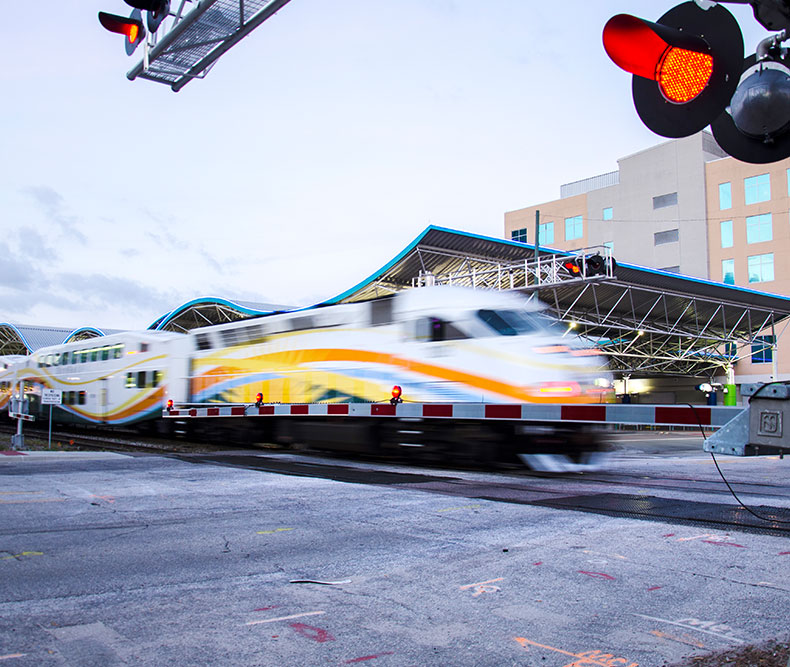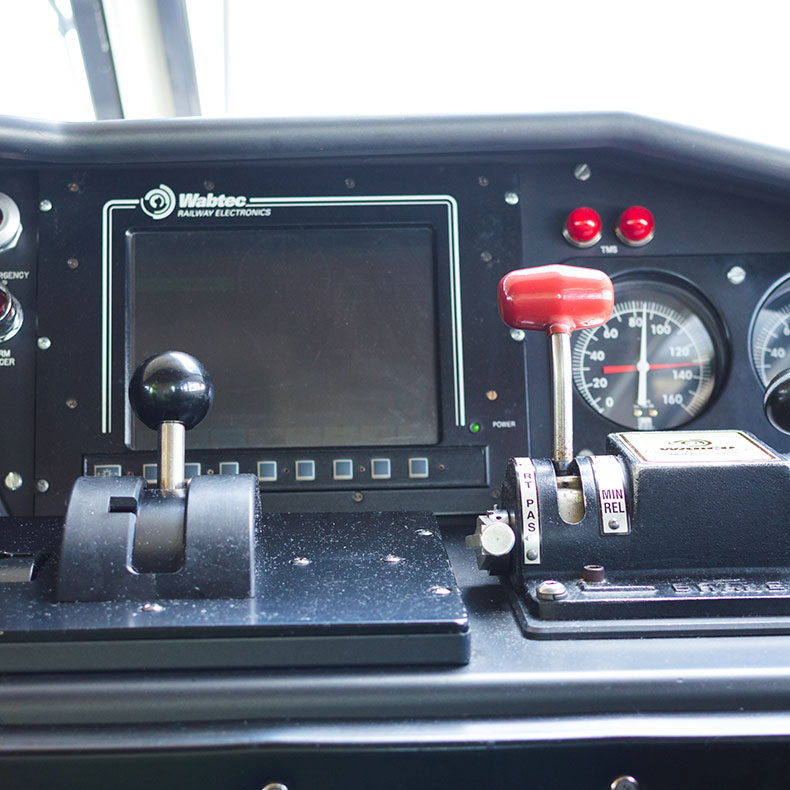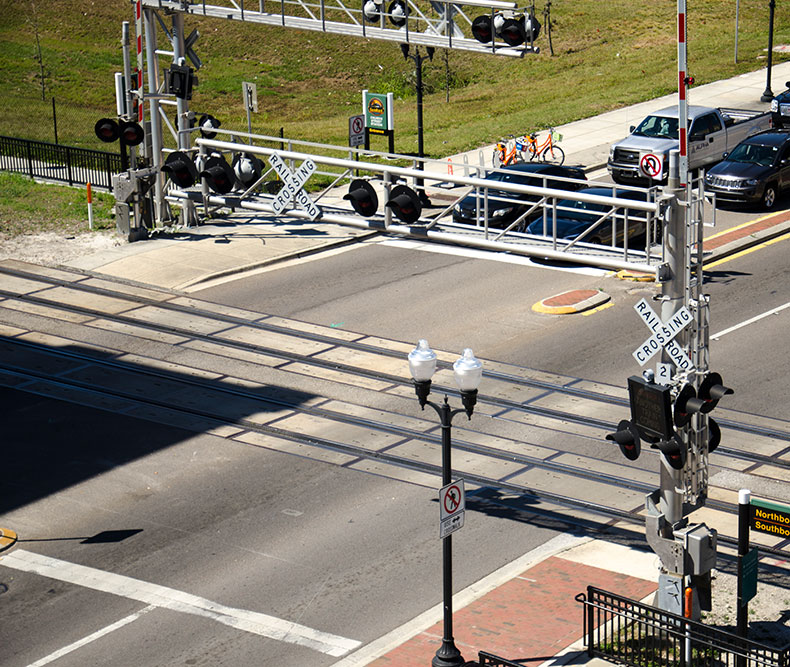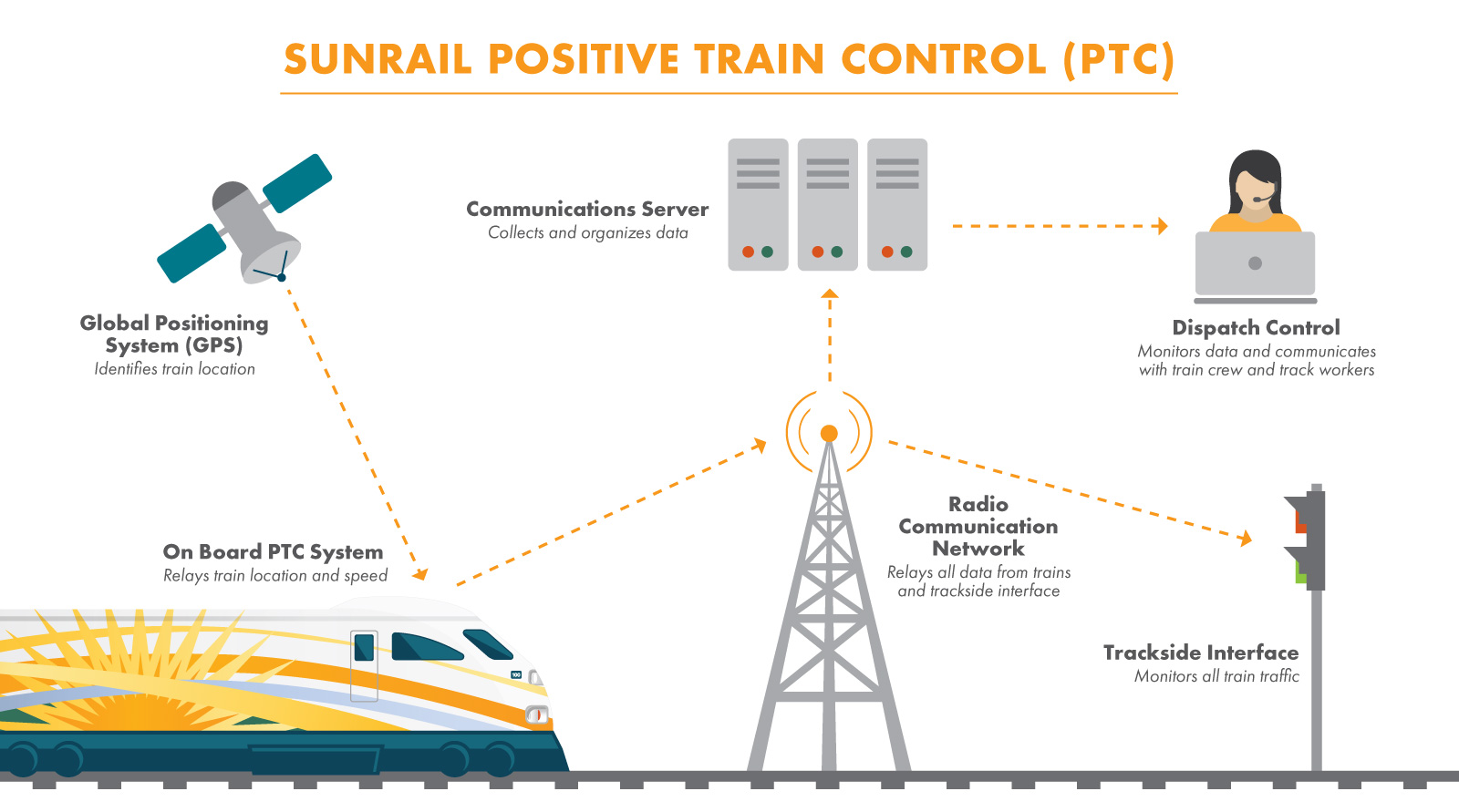
Doppler Effect
Have you ever noticed a train sounds quicker and louder as it gets closer to you then lower and slower after it passes? The sound of the train isn’t changing at all but you are experiencing what is known as the Doppler effect. Sound travels in waves and the frequency of those waves gets higher as the train gets closer and they get lower as they train passes and moves away. This phenomenon was discovered in 1842 by Austrian physicist Christian Doppler. This trick on the ears is just one more reason why you should stay off and away from tracks. You can never tell just how fast and how close they are relying on their sound.
View LessonPositive Train Control
Positive Train Control is just that – positive! It’s a safety system designed to monitor and control train movement. By connecting Global Positioning Systems (GPS), radio communications, trackside interfacing units, back office servers and a dispatch control system, the train and crews receive vital information about when, where and at what speed to travel. With freight companies, Amtrak and SunRail traveling on the same tracks, it is very important that everyone is talking to each other. This also helps protect people working on the tracks by assuring safe speeds through their work areas. The Federal Railroad Administration requires that all train systems have PTC and SunRail will have their system fully implemented in 2019.
View Infographic

Grade Crossings
Grade crossings are where tracks cross over roadways. You will often see flashing red lights, a cross buck and a bell attached to a mast plus, red and white crossing arms (also called gates). As the train approaches the crossing and passes over a sensor, an electrical signal is sent to the signal box located near the grade crossing activating the lights, bell and gates. After the train crosses completely over the sensor, the signal times out which raises the gates and turns off the lights and bell.

